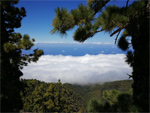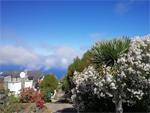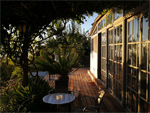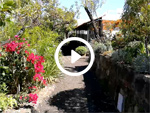CEDIC team goes La Palma - Introduction
| |
La Palma is a wonderful place for astrophotography: More
than 200 clear nights per year at an altitude of 800m and more
than 300 clear nights per year at the top of Roque de los
Muchachos, no light pollution, comfortable night temperatures
and only 4hours flight distance from Central Europe. With a
latitude of 28 degree, all southern objects culminate more than
20 degree higher than in Central Europe. |
|

| |
In the past, the infrastructure for high-end amateur
astrophotography was underdeveloped, and astrophotographers were
forced to bring their own equipment to the island of La Palma to
be able to create astro images with high quality. It was always
our dream to do astrophotography directly at a finca at La Palma
with high-quality equipment without the necessity to book excess
baggage.
In the new moon phase around July 23, 2017 this dream came true for
the CEDIC team (www.cedic.at),
consisting of Christoph Kaltseis, Bernhard Hubl, Markus Blauensteiner
and Michael Hanl.
With pleasure, we followed the friendly invitation of Kai von Schauroth
to ATHOS Centro Astronómico, a finca in
La Palma, which offers besides an excellent sky and first-class
equipment also an outstanding service (both in
astrophotography and in accommodation). |
|



| |
We could use the following equipment during our one-week
stay:
- ATHOS Observatory including AP175ED (7"), TEC 110FL (4") and
Moravian G4-16000 on 10Micron GM3000 HPS
- Baader APO 95/560, FLI ML16200 and Nikon D810A on 10Micron GM
1000 HPS
- AP130GT (5”), TS Imaging Star 100mm (4"), Canon EOS 6Da and Canon
EOS 1000Da on Skywatcher AZ EQ6 GT
- Skywatcher StarAdventurer, AstroTrac and iOptron mounts
including a number of DSLRs with different telephoto lenses and
wide-angle lenses
|
|



| |
During
a time span of one week up to ten cameras were running in each
night. Planning and coordinating this huge number of different setups
within our team was a true challenge, which we could only master by
using the planning tool of CCD-Guide (www.ccdguide.com).
Despite of the loss of one night because of clouds and limited
transparency in two nights because of Calima (a hot,
sand laden wind that blows in from the Northern Sahara), we could gather
raw data for more
than 50 images within our one-week stay. We grouped our results in 4 different parts:
- Part #1: Near Rho Ophiuchi
- Part #2: Nebulae in Sagittarius
- Part #3: Serpens & Scutum
- Part #4: From Aquila to Aquarius
|
|
|